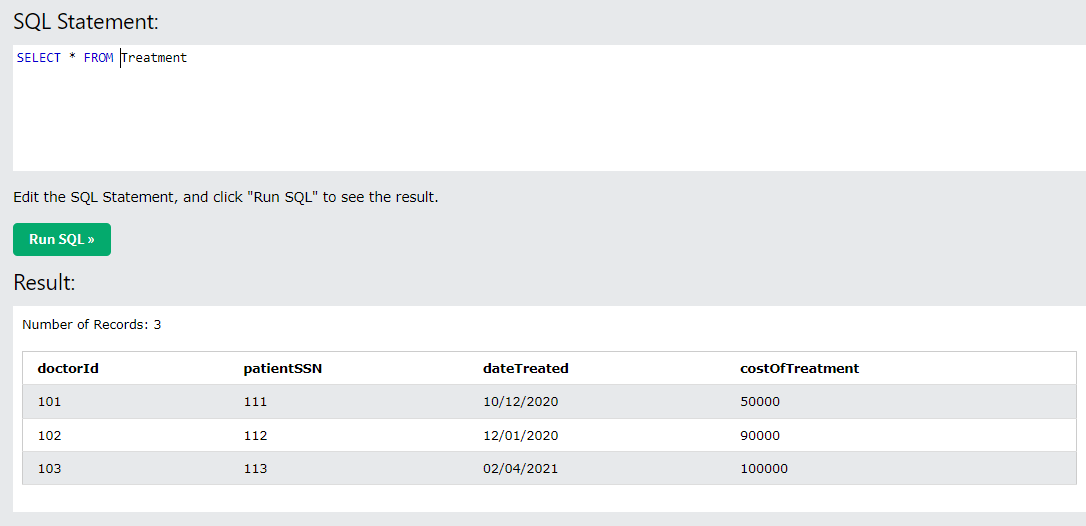Note that primary keys are in BOLD. Note also that attributes with the same name in different tables are foreign keys. For example, doctorID in the Treatment table is a foreign key that refers to the Doctor table. Doctor(doctorId:integer, specialtyID:integer, firstName:varchar(20), lastName:varchar(20), salary:numeric(11,2)) Specialty(specialtyID:integer, specialtyName:varchar(20), specialtyCost:numeric(11,2)) Treatment(doctorId:integer, patientSSN:integer, dateTreated:date, costOfTreatment:numeric(11,2)) Patient(patientSSN:integer, firstName:varchar(20), lastName:varchar(20), street:varchar(30), city:varchar(15), state:char(2),zipCode:integer(5)) 2.3) Write an SQL statement to increase the cost of all Specialty treatment by 2.5% 2.4) Write a SQL statement to delete all treatment rows that were done before 2015 and cost less than $500. 2.5) Write an SQL statement to select all Specialties where the specialtytName has a null value
Note that primary keys are in BOLD. Note also that attributes with the same name in different tables are foreign keys. For example, doctorID in the Treatment table is a foreign key that refers to the Doctor table.
Doctor(doctorId:integer, specialtyID:integer, firstName:varchar(20), lastName:varchar(20), salary:numeric(11,2))
Specialty(specialtyID:integer, specialtyName:varchar(20), specialtyCost:numeric(11,2))
Treatment(doctorId:integer, patientSSN:integer, dateTreated:date, costOfTreatment:numeric(11,2))
Patient(patientSSN:integer, firstName:varchar(20), lastName:varchar(20), street:varchar(30), city:varchar(15), state:char(2),zipCode:integer(5))
2.3) Write an SQL statement to increase the cost of all Specialty treatment by 2.5%
2.4) Write a SQL statement to delete all treatment rows that were done before 2015 and cost less than $500.
2.5) Write an SQL statement to select all Specialties where the specialtytName has a null value
Solution:
2.3)
Treatment table before increment by 2.5 % in costOfTreatment :

Step by step
Solved in 5 steps with 3 images









